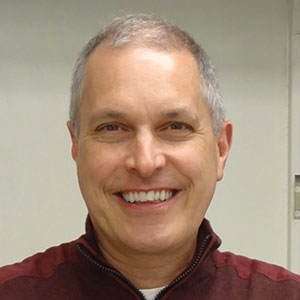Harold Smith, Ph.D.

Professional Experience
- Ph.D., Columbia University, 1995
- M.Phil., Columbia University, 1994
- M.A., Columbia University, 1990
Research Goal
My field of research is the determination of stem cell fate. I seek to understand the regulation of gene expression that gives rise to a specific type of cell. My model of choice is the germ line of the nematode Caenorhabditis elegans, which produces both sperm and egg.
Current Research
The laboratory provides next-generation sequencing (NGS) service for the NIDDK community. In my own research, NGS is a tool to define patterns of cell-type-specific gene expression, to characterize chromatin modifications associated with that expression, and to identify mutations that alter cell fate or function. We also use these NGS data sets for the development and implementation of bioinformatics software for analysis pipelines.
Applying our Research
Stem cells possess the unique ability to develop into other types of cells. The mechanisms that underlie this ability might one day be harnessed for the treatment of developmental defects and degenerative diseases.
Need for Further Study
Currently, we do not understand many of the rules that govern cell fate determination, which limits our ability to apply stem cell treatment toward specific therapeutic ends.
Select Publications
- Fly Cell Atlas: A single-nucleus transcriptomic atlas of the adult fruit fly.
- Li H, Janssens J, De Waegeneer M, Kolluru SS, Davie K, Gardeux V, Saelens W, David FPA, Brbić M, Spanier K, Leskovec J, McLaughlin CN, Xie Q, Jones RC, Brueckner K, Shim J, Tattikota SG, Schnorrer F, Rust K, Nystul TG, Carvalho-Santos Z, Ribeiro C, Pal S, Mahadevaraju S, Przytycka TM, Allen AM, Goodwin SF, Berry CW, Fuller MT, White-Cooper H, Matunis EL, DiNardo S, Galenza A, O'Brien LE, Dow JAT, FCA Consortium§, Jasper H, Oliver B, Perrimon N, Deplancke B, Quake SR, Luo L, Aerts S, Agarwal D, Ahmed-Braimah Y, Arbeitman M, Ariss MM, Augsburger J, Ayush K, Baker CC, Banisch T, Birker K, Bodmer R, Bolival B, Brantley SE, Brill JA, Brown NC, Buehner NA, Cai XT, Cardoso-Figueiredo R, Casares F, Chang A, Clandinin TR, Crasta S, Desplan C, Detweiler AM, Dhakan DB, Donà E, Engert S, Floc'hlay S, George N, González-Segarra AJ, Groves AK, Gumbin S, Guo Y, Harris DE, Heifetz Y, Holtz SL, Horns F, Hudry B, Hung RJ, Jan YN, Jaszczak JS, Jefferis GSXE, Karkanias J, Karr TL, Katheder NS, Kezos J, Kim AA, Kim SK, Kockel L, Konstantinides N, Kornberg TB, Krause HM, Labott AT, Laturney M, Lehmann R, Leinwand S, Li J, Li JSS, Li K, Li K, Li L, Li T, Litovchenko M, Liu HH, Liu Y, Lu TC, Manning J, Mase A, Matera-Vatnick M, Matias NR, McDonough-Goldstein CE, McGeever A, McLachlan AD, Moreno-Roman P, Neff N, Neville M, Ngo S, Nielsen T, O'Brien CE, Osumi-Sutherland D, Özel MN, Papatheodorou I, Petkovic M, Pilgrim C, Pisco AO, Reisenman C, Sanders EN, Dos Santos G, Scott K, Sherlekar A, Shiu P, Sims D, Sit RV, Slaidina M, Smith HE, Sterne G, Su YH, Sutton D, Tamayo M, Tan M, Tastekin I, Treiber C, Vacek D, Vogler G, Waddell S, Wang W, Wilson RI, Wolfner MF, Wong YE, Xie A, Xu J, Yamamoto S, Yan J, Yao Z, Yoda K, Zhu R, Zinzen RP.
- Science (2022 Mar 4) 375:eabk2432. Abstract/Full Text
- Mutation Mapping and Identification by Whole-Genome Sequencing.
- Smith HE.
- Methods Mol Biol (2022) 2468:257-269. Abstract/Full Text
Research in Plain Language
We determine the sequence of DNA and RNA samples. These data allow us to identify genetic variations or mutations that cause or influence disease, to determine the targets of DNA-binding proteins, and to identify which genes are turned on or off. We also develop software that allows us to extract this information from the sequence data.
